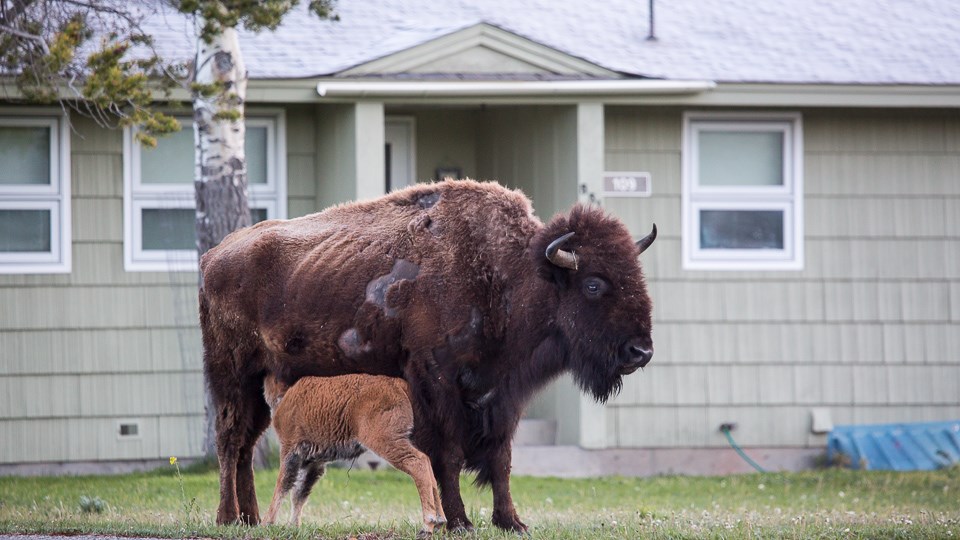
NPS / Neal Herbert If you live near the park’s boundary and bison inhabit your town at any point during the year, learning to coexist with these magnificent animals will help build a society that accepts them on public lands in the region. Lack of tolerance for wild bison outside Yellowstone poses one of the greatest obstacles to the continued conservation of America’s national mammal. People who live and work in and around Yellowstone have been sharing the landscape with bison for over a century. We’ve learned that some simple preventative measures make all the difference when it comes to coexisting with them, just as it does with other large mammals like deer, elk, and bears. Personal SafetySharing the landscape with animals like bison requires a sense of awareness more than anything else. Bison do not pose a threat to people unless you get too close. Many bison-related injuries in Yellowstone result from people approaching them to take a picture. Use a camera with a telephoto lens to take photos from more than 25 yards away. Be alert for bison at all times. Look outside before you leave your house. Approach the corners of buildings slowly in case there’s an animal grazing or resting just out of sight. Use a flashlight when walking at night.
Always have an escape plan by identifying nearby protective cover like trees and cars. If there’s no cover, turn around or wait for the bison to leave the area. Bison don’t like dogs, so keep dogs leashed when bison are in the area (leashes are required in Yellowstone). Finally, bear spray can be effective at deterring an aggressive bison. DrivingThe size and dark coloration of bison means you should be especially careful when driving through bison habitat at night or anytime visibility is poor. Even during the day, plan extra time when driving through country where wild bison are present (the speed limit in Yellowstone is 45 mph). If bison are on the road, be patient, drive slowly, and stay in your vehicle. Wait for bison to move along: do not honk your horn or drive aggressively toward them. Protecting PropertyThe size and strength of adult bison means exclusion fences are needed to protect landscaping, especially gardens (which bison will trample while grazing) and trees (which bison will rub against, removing the lower branches and the bark). Avoid fencing large areas and allow animals access to as much land as you can. Exclusion fences for bison, deer, and elk should be 7 to 8 feet high. Use a wooden fence that animals can’t see through to protect houses and play areas. To protect trees and gardens, use an 8’ woven wire fence with posts set 8 to 20-feet apart. The wire should be brought tight to the ground, and the top should be made visible by installing a top rail, high-visibility wire, or flagging. Place gates for human access at corners since that’s where an inadvertently trapped animal is most likely to look for escape. Need more information? The state of Montana offers a landowner’s guide to wildlife-friendly fencing. Conservation & StewardshipAnimals like bison, bears, elk, and wolves don’t recognize the boundaries of Yellowstone. Conservation of these species means more than maintaining a specific number of animals inside a park. Conservation means preserving ecological process like migration, predation, and natural selection--processes that have taken place across the Greater Yellowstone Ecosystem for millennia. Everyone living in this ecosystem plays a role in the stewardship of Yellowstone’s wildlife, and we’ll need to work together to find a future that includes wild bison. More Information
|
Last updated: March 13, 2024



